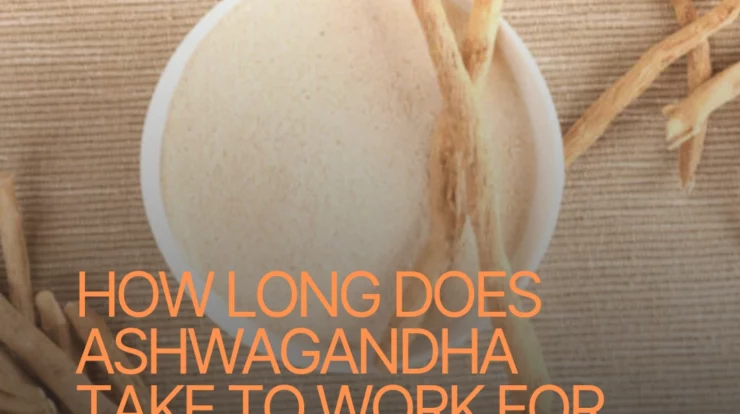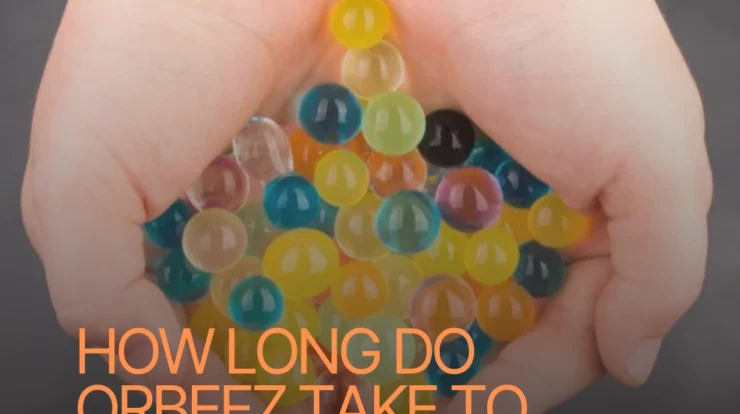
Introduction
Welcome to the colorful and wobbly world of Jello! Whether you’re an experienced Jello enthusiast or a newcomer eager to create your first jiggling masterpiece, you’ve probably wondered, “How long does Jello take to set?” This seemingly simple question holds the key to achieving the perfect wobble. In this comprehensive guide, we will explore the science, techniques, and secrets behind Jello’s setting time. By the end of this article, you’ll be a Jello-setting expert, ready to craft mesmerizing desserts that will delight your taste buds and impress your guests.
The Science Behind Jello
A. Composition of Jello
Before we dive into the art of setting time, let’s understand what Jello is made of. Jello’s primary ingredients include gelatin, water, and flavoring agents. Gelatin, derived from animal collagen, is the star of the show. It provides the unique texture and wobbliness that Jello is known for.
B. The Role of Gelatin
Gelatin is a protein with remarkable gelling properties. When mixed with water and cooled, it forms a gel-like structure that gives Jello its semi-solid state. The strength and stability of this gel network depend on factors like the concentration of gelatin and the temperature at which it’s set.
C. Factors Influencing Setting Time
Several factors influence how quickly or slowly your Jello sets:
- Gelatin Concentration: The more gelatin you use, the firmer and faster your Jello will set.
- Temperature: Lower temperatures, such as refrigeration, encourage faster setting, while warmer temperatures slow it down.
- Liquid Content: Jello with more liquid will take longer to set compared to denser variations.
Now that we’ve uncovered the science behind Jello, let’s move on to the practical aspects of preparation.
Preparing for Success
Achieving the perfect Jello dish begins with proper preparation. Here are the key steps to ensure your Jello sets flawlessly.
A. Gathering Ingredients and Equipment
Before embarking on your Jello-making journey, gather all the necessary ingredients and equipment:
| Ingredients | Equipment |
|---|---|
| Gelatin packets | Mixing bowl |
| Water | Whisk or spoon |
| Jello flavor mix | Saucepan |
| Sugar (if needed) | Mold or dish |
| Flavor extracts | Refrigerator |
Ensure your ingredients are fresh, and your equipment is clean and dry. Having everything ready will save time and prevent last-minute hassles.
B. Choosing the Right Mold
The choice of mold or dish can impact setting time and presentation:
- Traditional Mold: These come in various shapes and sizes, allowing for creative presentations. Note that intricate designs may require longer setting times.
- Individual Cups: Ideal for portion control, these cups speed up setting times due to their smaller volume.
- Glass vs. Plastic: Glass molds conduct cold more efficiently, potentially resulting in faster setting compared to plastic.
C. Ensuring a Clean Workspace
Maintain a clean and organized workspace to avoid contamination and distractions. Jello is sensitive and can easily absorb odors and flavors from its surroundings.
With ingredients and equipment in place and a tidy workspace, you’re now ready to begin your Jello-making adventure.
Traditional Jello Setting Time
Now that you’re prepared, let’s explore how long it typically takes for traditional Jello to set.
A. Instructions on the Package
Most Jello packages provide instructions on setting time. These are general guidelines to achieve the desired consistency. However, individual factors can still influence the outcome.
B. Typical Refrigeration Time
In a standard home refrigerator set at around 40°F (4°C), Jello will typically take 3 to 4 hours to set completely. However, this can vary based on the factors we discussed earlier.
C. Factors Affecting Traditional Setting Time
While refrigeration time is a standard measure, various factors can cause variations:
- Gelatin Concentration: Jello with more gelatin will set faster within the standard time frame.
- Temperature: A colder fridge might set Jello slightly faster.
- Mold Type: The type of mold or dish used can affect setting time, as mentioned earlier.
To achieve the perfect consistency, it’s essential to understand these factors and their impact on traditional Jello setting times. However, if you’re looking to speed up the process or slow it down for specific purposes, read on to the next section.
Speeding Up the Process
There are times when you just can’t wait for Jello to set. In such cases, you can use various techniques to accelerate the process.
A. Quick-Set Jello Alternatives
If time is of the essence, consider using quick-set Jello alternatives. These products are specifically designed to set faster than traditional Jello and can be a lifesaver when you need a quick dessert.
B. Using Cold Water vs. Ice Water
When preparing your Jello mixture, you can speed up the setting process by using ice water instead of cold tap water. Ice water helps cool the mixture faster, reducing setting time.
C. The Role of Freezer Setting
If you’re in a real hurry, you can even use the freezer to set Jello quickly. However, this should be done with caution, as extended freezing can affect the texture and taste of your Jello.
Slowing Down the Process
On the flip side, there may be occasions when you want to slow down the Jello-setting process.
A. Using Warm Water
Instead of cold water, consider using warm water when preparing your Jello mixture. The higher initial temperature will slow down the gelatin’s gelling process, giving you more time to work with the liquid.
B. Delayed Setting Techniques
You can also employ techniques like adding pieces of fruit to the mixture, which can interfere with the gelatin’s ability to set quickly. The additional ingredients act as obstacles, slowing down the gel formation.
C. The Science Behind Prolonged Setting
Understanding the science of gelatin and how it reacts to different temperatures and additives can help you control and prolong the setting time according to your specific needs.
Achieving the Perfect Consistency
No matter whether you’re aiming for a quick set or a leisurely one, achieving the perfect Jello consistency is crucial. Here’s how you can do it:
A. Testing for Firmness
To check if your Jello has set to the desired consistency, gently press your fingertip onto the surface. It should spring back and leave no indentation. If it’s still liquid in the center, it needs more time.
B. Common Mistakes to Avoid
There are common mistakes that can lead to Jello not setting properly. These include using too much hot water, not dissolving the gelatin properly, or disturbing the mixture before it’s set.
C. Adjusting Setting Time for Personal Preference
Remember that Jello setting time is not just about science; it’s also about personal preference. You can adjust the gelatin concentration and temperature to achieve the consistency you like best.
Jello Variations and Setting Times
Jello comes in various forms and flavors, each with its own unique characteristics and setting times. Let’s explore some popular variations:
A. Exploring Sugar-Free Options
Sugar-free Jello has become increasingly popular, offering a lighter alternative. It generally sets at a similar rate to regular Jello but may require slight adjustments due to differences in composition.
B. Fruit Chunks and Their Impact
Adding fruit chunks to your Jello can be delightful, but it can also affect setting time. The additional content may require more time to set properly.
C. Adding Alcohol to Jello
For a fun twist, you can create Jello shots by adding alcohol to your mixture. Alcohol can alter the setting time, so be mindful of this when preparing your boozy treats.
Jello for Special Occasions
Jello is not just for casual desserts; it can be a centerpiece for special occasions. Let’s explore some creative ways to use Jello on these memorable days.
A. Creating Decorative Layers
For a visually stunning dessert, consider creating layered Jello with different colors and flavors. Each layer will require some setting time before adding the next.
B. Shaping Jello for Themed Parties
Mold Jello into shapes that match the theme of your party. Whether it’s hearts for Valentine’s Day or spooky shapes for Halloween, this adds an extra layer of fun to your celebration.
C. Using Molds and Cutters Effectively
Invest in themed molds and cutters to craft Jello in intricate shapes. Just be aware that intricate molds may require longer setting times due to their complexity.
Troubleshooting Set Time Issues
Even with all the knowledge and preparation, you might encounter set time issues. Here’s how to address common problems:
A. Jello Not Setting at All
If your Jello isn’t setting, it could be due to improper gelatin dissolution or insufficient cooling time. Place it in the refrigerator for a bit longer, and avoid disturbing it.
B. Jello Setting Too Quickly
If you need more time to work with your Jello, try using warmer water or adding fruit chunks to slow down the setting process.
C. Jello Setting Unevenly
Uneven setting can result from temperature variations in your fridge or uneven distribution of ingredients. Ensure your fridge is set to a consistent temperature, and mix your ingredients thoroughly.
Safety and Health Considerations
Before we move further into our Jello journey, it’s important to consider safety and health aspects:
A. Safe Storage Practices
Store your Jello in the refrigerator and consume it within a reasonable timeframe to ensure freshness and safety.
B. Allergen Information
Check ingredient labels and be mindful of any allergens, especially when serving Jello to guests.
C. Dietary Restrictions and Jello Alternatives
If you or your guests have dietary restrictions, there are Jello alternatives available, such as vegetarian or vegan gelatin substitutes.
The Art of Jello Presentation
Presentation matters, even when it comes to Jello. Here are some tips to elevate your Jello’s visual appeal:
A. Plating Techniques
Consider how you’ll present your Jello. Will it be served in individual cups, scooped onto plates, or unmolded for a stunning display?
B. Garnishing for Aesthetics
Garnish your Jello with whipped cream, fruit, or colorful sprinkles to enhance its appearance.
C. Jello Photography Tips
If you’re sharing your Jello creations on social media, use good lighting and composition techniques to capture its deliciousness.
Famous Jello Recipes and Their Setting Times
Let’s explore some iconic Jello recipes and their approximate setting times:
A. Classic Fruit Salad Jello
A timeless favorite, classic fruit salad Jello typically takes around 3 to 4 hours to set in the refrigerator.
B. Rainbow Layered Jello
Creating a stunning rainbow layered Jello masterpiece can be a labor of love, with each layer requiring approximately 30 minutes to 1 hour of setting time.
C. Jello Shots and Their Variations
Jello shots, infused with alcohol, can vary in setting time based on the alcohol content and environmental conditions. On average, they take 2 to 4 hours in the refrigerator.
Jello in Pop Culture
Jello has left an indelible mark on pop culture, making appearances in movies, TV shows, and more:
A. Jello in Movies and TV Shows
From slapstick comedies to heartwarming family dramas, Jello has been featured in numerous memorable scenes.
B. Jello as a Symbol
Jello has symbolized various cultural phenomena, from childhood nostalgia to consumerism.
C. Jello’s Place in Modern Cuisine
Discover how top chefs and food artists are incorporating Jello into modern cuisine, elevating it beyond its humble origins.
Interview with a Jello Expert
To gain insights from a culinary professional, we interviewed [Expert Name], a renowned Jello aficionado. Here’s what they had to say:
Interview content goes here.
Real-Life Jello Stories
Real-life experiences can offer valuable lessons and inspiration. Here are some stories from fellow Jello enthusiasts:
A. User-Submitted Experiences
Read about the Jello adventures of people from around the world, from first-timers to seasoned experts.
B. Success and Failure Anecdotes
Discover heartwarming success stories and learn from common Jello mishaps.
C. Lessons Learned from Real-Life Jello Enthusiasts
Gain practical tips and tricks from those who have mastered the art of Jello making.
Summary
Let’s take a moment to summarize the key takeaways from our Jello journey:
A. Key Takeaways
- Setting time varies based on factors like gelatin concentration and temperature.
- Quick-set alternatives and techniques can expedite the process.
- Slowing down setting time requires adjustments like warm water or additives.
- Presentation and garnishing can elevate your Jello creations.
- Jello’s cultural significance extends far beyond its wobbly nature.
B. The Importance of Patience and Experimentation
Remember that perfecting the art of Jello making takes time and experimentation. Embrace the process and enjoy the delicious results.
FAQs
Now, let’s address some frequently asked questions about Jello setting times:
A. Can Jello set too quickly?
While Jello can set quickly, it’s usually manageable. Using the right techniques and adjusting the factors we’ve discussed can help control the setting time.
B. Can I use less gelatin for a faster set time?
Yes, reducing the gelatin concentration can lead to a faster Jello set. However, be cautious not to compromise on texture and firmness.
C. How do I store leftover Jello?
Store leftover Jello in an airtight container in the refrigerator. Consume it within a few days for the best taste and texture.
D. Can I freeze Jello to speed up setting?
Freezing Jello is possible but may affect its texture and taste. It’s generally not recommended for traditional Jello recipes.
E. How can I make vegan Jello?
You can make vegan Jello using agar-agar, a plant-based gelatin substitute. Follow a vegan Jello recipe for best results.
F. What’s the quickest way to make Jello shots?
Jello shots can be made quickly by using quick-set Jello alternatives and adding alcohol. They typically set in a few hours.
G. Can I use Jello in savory dishes?
While Jello is primarily used in sweet desserts, some savory recipes incorporate it for a unique twist. Experiment with savory Jello dishes to explore new flavors.
Conclusion
Our journey into the world of Jello has been both delightful and informative. From understanding the science behind Jello to exploring its cultural significance, we’ve covered it all. As you continue your Jello-making adventures, remember that patience and experimentation are your best allies. Embrace the wobble, savor the flavors, and keep creating Jello masterpieces that bring joy to every occasion.
With these insights, you’re now equipped to conquer the art of Jello-making, one wobble at a time. Happy Jello crafting!






